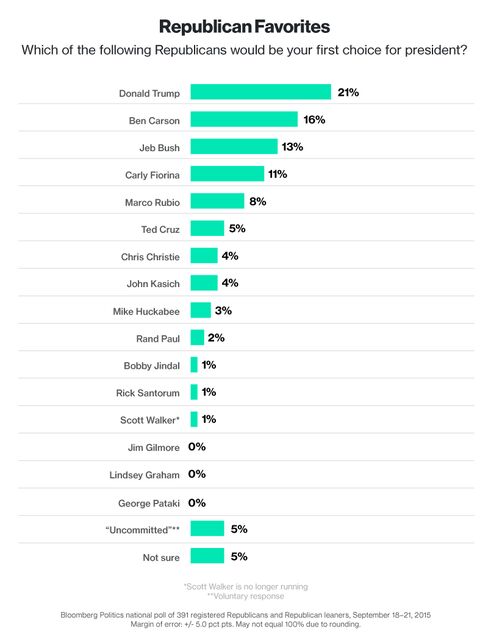Numerous studies show that foods are viable LONG after they were canned, or after the expiration of stamped dates.
Except for infant formula, product dating is not even required by federal regulations
A fascinating study published in the Journal of Food Science reported on canned food analyzed from the Steamboat Bertrand, which sank over 100 years before in 1865.
The findings?
National Food Processors Association (NFPA) chemists detected no microbial growth and determined that the foods were as safe to eat as when they had been when canned. The chemists added that while significant amounts of vitamins C and A were lost, protein levels remained high, and all calcium values “were comparable to today’s products.”
A prepper’s remedy for the loss of vitamins is, of course, to simply store and rotate multi-vitamins in his prepping supplies.
 These studies don’t surprise me, for proper canning creates a vacuum that prevents microorganisms and air from entering the jar and contaminating the contents. As long as the seal is good the contents should be good, which is why I’m comfortable eating a jar of stew from my pantry—even if I canned it 20 years before. We use our trusty All American 921 pressure canner to can all sorts of meats, stews and vegetables–it’s probably my most valued self-sufficiency item.
These studies don’t surprise me, for proper canning creates a vacuum that prevents microorganisms and air from entering the jar and contaminating the contents. As long as the seal is good the contents should be good, which is why I’m comfortable eating a jar of stew from my pantry—even if I canned it 20 years before. We use our trusty All American 921 pressure canner to can all sorts of meats, stews and vegetables–it’s probably my most valued self-sufficiency item.
Evidently authorities agree with my view.
In a food safety fact sheet, Utah State University Food Safety Specialist, Brian Nummer wrote:
For emergency storage, canned foods in metal or jars will remain safe to consume as long as the seal has not been broken.
In another study, NFPA chemists also analyzed a 40-year-old can of corn found in the basement of a home in California. Again, the canning process had kept the corn safe from contaminants and from much nutrient loss. In addition, the chemists said the kernels looked and smelled like recently canned corn.
So as these scientific analyses show, canned foods are an excellent option for preppers.
When to Throw Canned Food Out
It is unlikely that you will ever be forced with the decision of whether or not to open a can that is in fact, 40 years old. However, if it has been several years and you come across a can that got lost in the pantry, it should be fine to eat, just as the above studies show. But what if the can is dented?
Just as many people have tremendous belief in expiration dates, they also were led to believe that dented cans should be avoided–even discarded. But that’s not usually the case.
But first, why the concern about dents anyway?
The primary concern is the very unlikely (but remotely possible) risk of botulism contamination. Botulism can be a deadly illness and is caused by various strains of the Clostridium bacterium. The bacteria thrives in low-oxygen environments (such as those in canned food) and produces a neurotoxin that can cause loss of muscle control. If it goes untreated, the illness can spread throughout the body, ultimately reaching the respiratory system.
Clearly botulisum is something to be avoided at all costs. But what are the odds that you can get botulism from canned food? Do you know ANYONE who contracted botulism from commerically canned food?
 According to the CDC, an average of only 145 cases of botulism are reported in the U.S. each year. Of that, only 15 percent are the result of foodborne bacteria–most botulism cases (65%) are infant botulisum (caused sometimes by feeding honey to infants). So, there are roughly 21 cases of foodborne botulism in the U.S. each year. 21. Out of over 300 million people, all of whom eat.
According to the CDC, an average of only 145 cases of botulism are reported in the U.S. each year. Of that, only 15 percent are the result of foodborne bacteria–most botulism cases (65%) are infant botulisum (caused sometimes by feeding honey to infants). So, there are roughly 21 cases of foodborne botulism in the U.S. each year. 21. Out of over 300 million people, all of whom eat.
As you can see, botulism is VERY, VERY rare. You should worry far more about dropping the canned food and breaking your toe.
Even in the very remote case of a bout with botulism, it certainly doesn’t mean death, as it can be treated at a hospital with antitoxins. While botulism can result in death due to respriatory failure, the fatality rate has dropped from 50 percent to three–five percent in the past 50 years. So, out of 21 cases, a three percent fatality rate would mean that one person may die roughly every two years from foodborne botulism. And that’s about what we find.
Most recently, a 54 year old person died in Ohio at an April 2015 pot-luck dinner. The likely culprit in that botulism outbreak that sickened more than 20 was potato salad made from home canned potatoes.
Do you know ANYONE who contracted botulism from commerically canned food?
And therein lies the problem with most cases of botulism. While there are, on average, 21 foodborne cases of botulism per year, most are the result of improper home canning. Of course, I don’t know how the potatoes in this instance were canned, but most likely not with a pressure canner, such as the All American 921.
All vegetables (including potatoes), all meats, etc. are LOW ACID foods, and must be canned in a pressure canner. However, many “old timers” canned those foods in water bath canners and got away with it. When you tell their children (most of whom are rapidly becoming old-timers themselves) that the foods must be pressure canned, they retort, “well my mother always did it this way, so I will too.”
Anyway, botulism is something to be aware of, but there are many more threats in your life worthy of your attention. Like…oh…not having any food stored at all.
Small dents almost always present no problem, the more important issue is the location of the dent. A can with a sharp dent on either the top or side seam should probably be discarded, because seam dents can allow the introduction of harmful bacteria.
The good news is that most dents occur harmlessly on the side. Unattractive? Yes. But unsafe? No. Even the USDA agrees with this point when they say:
If a can containing food has a small dent, but is otherwise in good shape, the food should be safe to eat. Discard deeply dented cans. A deep dent is one that you can lay your finger into. Deep dents often have sharp points. A sharp dent on either the top or side seam can damage the seam and allow bacteria to enter the can. Discard any can with a deep dent on any seam.
Other signs that you should check to ensure your canned foods are safe include:
- Make sure the can is not bulging. This occurs when harmful bacteria, such as that which causes botulism, enters and creates gas.
- If the can has rust near the seams, inspect carefully. But rust or dents do not affect the contents of the can as long as the can does not leak. If the can is leaking, however, or if the ends are bulged, the food should not be used.
- Be very cautious if the can spurts liquid or foam when opened. Not a good sign.
- Finally, trust your senses. If the food is discolored, moldy, or smells bad or simply doesn’t smell as it should (canned fruit that doesn’t smell fruity), then toss it. It’s not worth the risk.
Summing it Up
So what have we learned.
- There are no expiration dates, nor are they required. Rather, there are suggested dates by the manufacturer of when to use the food by.
- Canning is a very safe process that protects the food for a long time–over 100 years, if necessary. That’s a fact.
- Botulism is a concern, but rarely a legitimate threat. Just uses your eyes and nose to assess the food. If the can is bulging (as in the picture above), by all means dispose of it. It’s definitely not worth the risk. But if it merely has a shallow dent and the seam hasn’t been compromised, I’m sure it will pass the eyes and nose test.
- It’s best, in my view, if you can the food yourself, for the simple reason that you don’t have to worry about dents. Glass jars don’t dent. If the seal on the top of the jar is good, the food is good. Another reason it’s best to can your own food is that you don’t have to worry about your Mason jars being lined with bisphenol A( BPA), as many canned foods are, just like water bottles. The BPA has been linked to a rapid rise in blood pressure, and chronic exposure has been associated with heart disease. So get yourself an All American 921 pressure canner or borrow one from a friend. Buy some produce and meats from local farmers (you can find a list of farmers at localharvest.org) and start canning your own food. You won’t have to worry about BPA, you’ll know what’s in it, when it was canned and you’ll learn a lifelong self-sufficiency skill.
http://www.selfsufficientman.com/canned-food-shelf-life/
Does this surprise anyone? Will anything be done about it?
75% in U.S. See Widespread Government Corruption
WASHINGTON, D.C. -- Three in four Americans (75%) last year perceived corruption as widespread in the country's government. This figure is up from two in three in 2007 (67%) and 2009 (66%).
While the numbers have fluctuated slightly since 2007, the trend has been largely stable since 2010. However, the percentage of U.S. adults who see corruption as pervasive has never been less than a majority in the past decade, which has had no shortage of controversies from the U.S. Justice Department's firings of U.S. attorneys to the IRS scandal.
These figures are higher than some might expect, and while the lack of improvement is somewhat disconcerting, the positive takeaway is that Americans still feel fairly free to criticize their government. This is not the case in some parts of the world. Questions about corruption are so sensitive in some countries that even if Gallup is allowed to ask them, the results may reflect residents' reluctance to disparage their government. This is particularly true in countries where media freedom is restricted.
This is why it is most appropriate to look at perceptions of corruption through such lenses as the Freedom House's Press Freedom rankings. Ratings vary among countries with a "free press," including the U.S., and range from a high of 90% in Lithuania to a low of 14% in Sweden. The U.S. does not make the top 10 list, but notably, it is not far from it.
These data are available in Gallup Analytics.
Survey Methods
Results are based on telephone interviews with approximately 1,000 U.S. adults each year, aged 15 and older, conducted between 2007 and 2014. For results based on the total sample of national adults in the U.S., the margin of sampling error has typically been ±4.0 percentage points at the 95% confidence level.
For results based on the total sample of national adults across the 134 countries surveyed in 2014, the margin of sampling error ranged from ±2.1 percentage points to ±5.6 percentage points at the 95% confidence level.
The margin of error reflects the influence of data weighting. In addition to sampling error, question wording and practical difficulties in conducting surveys can introduce error or bias into the findings of public opinion polls.
For more complete methodology and specific survey dates, please review Gallup's Country Data Set details.
http://www.gallup.com/poll/185759/widespread-government-corruption.aspx





















